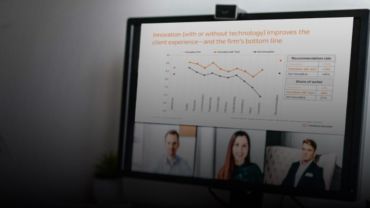Thomson Reuters Acritas' newly released Regional Law Firm Brand Indexes measure the relative positioning of law firms in the eyes of their regional clients
When Thomson Reuters Acritas released its Global Law Firm Brand Index back in January, two key themes emerged and were identified as successful factors in how firms have worked with their clients and reacted to the pandemic. First, in a disruptive year, clients had gravitated to their most trusted advisors and firms, doubling down on their strongest relationships; and second, in a year where travel has come to a stand-still for many organizations, clients sought those law firms that had a strong local presence.
Thomson Reuters is now looking at the impact the pandemic has had locally on different markets. The Regional Law Firm Brand Indexes — released today for the U.S., Canada, the U.K. and Mainland Europe markets — measure the relative positioning of law firms in the eyes of their regional legal services buyers and tracks how the competitive landscape changes in these markets from year to year.
This year, in particular, the Indexes analyzed how the COVID-19 pandemic is transforming buyers’ relationships with law firms — and which firms have risen to these evolving challenges to establish themselves as new market leaders.
Download the Thomson Reuters Regional Law Firm Brand Index 2021 tables and methodology here.
Although all the regions saw the two global themes as indicators of success at affirming law firms’ positions in the eyes of clients, each region also had its own differing trends underpinning the 2021 results.
Making the “most-used firm” roster
The U.S. Law Firm Brand Index, for example, saw that when firms were uniquely positioned to handle and align with a client’s most pressing, high-value needs, they saw substantial increases in the number of buyers considering these firms as their most-used firm for high-value work.
In Canada, it was a slightly different story as clients wanted their firms to provide a holistic approach. By not asking questions about clients’ business challenges, partners put themselves and their firm at a disadvantage in this age of tailored content. This feat requires proactive, partner-driven outreach to clients that allows partners to share insight that goes beyond their specific practice area, but which covers the holistic business issues a client may be facing.
Moving across the pond, the U.K. faced an even bigger share of uncertainty with ongoing Brexit negotiations adding to the atmosphere which has hung over the continent for much of the last five years. However, at least one thing remained constant. U.K. businesses’ need for legal support overseas is a strong as ever, with clients seeking coordinated, cross-border partnerships that can combine a global platform with deep local knowledge.
In the final region, Mainland Europe was also weighed down by the implications of Brexit, leaving an air of uncertainty under which law firms cannot be complacent with client relationships.
In a year where business development and collaboration turned virtual, it was – and remains – crucial for firms to remain top-of-mind when clients are considering which firm to hire for work. The direct contact lawyers have with clients is one of the most effective ways to build sustainable top-of-mind awareness, according to Acritas, part of Thomson Reuters’ Sharplegal research. The ability of firms to break through the noise of the pandemic and connect with clients in a way that resonated with the market was key here.
Keeping an eye on what comes next
Although history may be a good guide, in many ways the legal industry was in uncharted territory for much of last year. Across markets, mass vaccination roll outs and a possible return to office means that clients are now looking ahead to navigate what comes next.
In the U.K., leading law firms gravitated towards those skills that help their clients understand what is coming around the corner and how to practically react to current legal challenges. Firms that can deliver practical, commercially driven, forward-looking expertise will have the advantage in this market.
The practical approach and business understanding factors are also at play in driving brands across the U.S., Canada and Mainland Europe Indexes, and will become more important to clients this year, especially as the relative conservative outlook for legal spend becomes a reality.
A client-centric, value-adding partner
Having looked at each of the regions individually, another overarching global theme emerges: Clients are looking to partner with their external law firms as they navigate financial uncertainty. The value conversation has evolved, and those firms that can add value to their client relationships — not only through the quality and practicality of their advice, but with how the partners approach the pricing conversation — will be best positioned.
And those firms that avoid the conversation altogether, will see their value standing with clients erode. Looking at the value that clients seek, as reflected in these regional indices, shows that speaking in terms the client understands can build value, and innovation in pricing is also becoming more important. More than ever before, clients want certainty in how much things will cost.
The Thomson Reuters Regional Law Firm Brand Indexes 2021 are all based on data compiled from Sharplegal 2020.
To learn more about the Regional Law Firm Brand Indexes and the other trends effecting each market or gain access to global legal market data to improve firm performance and sharpen your competitive edge, please contact acritas_research@tr.com







